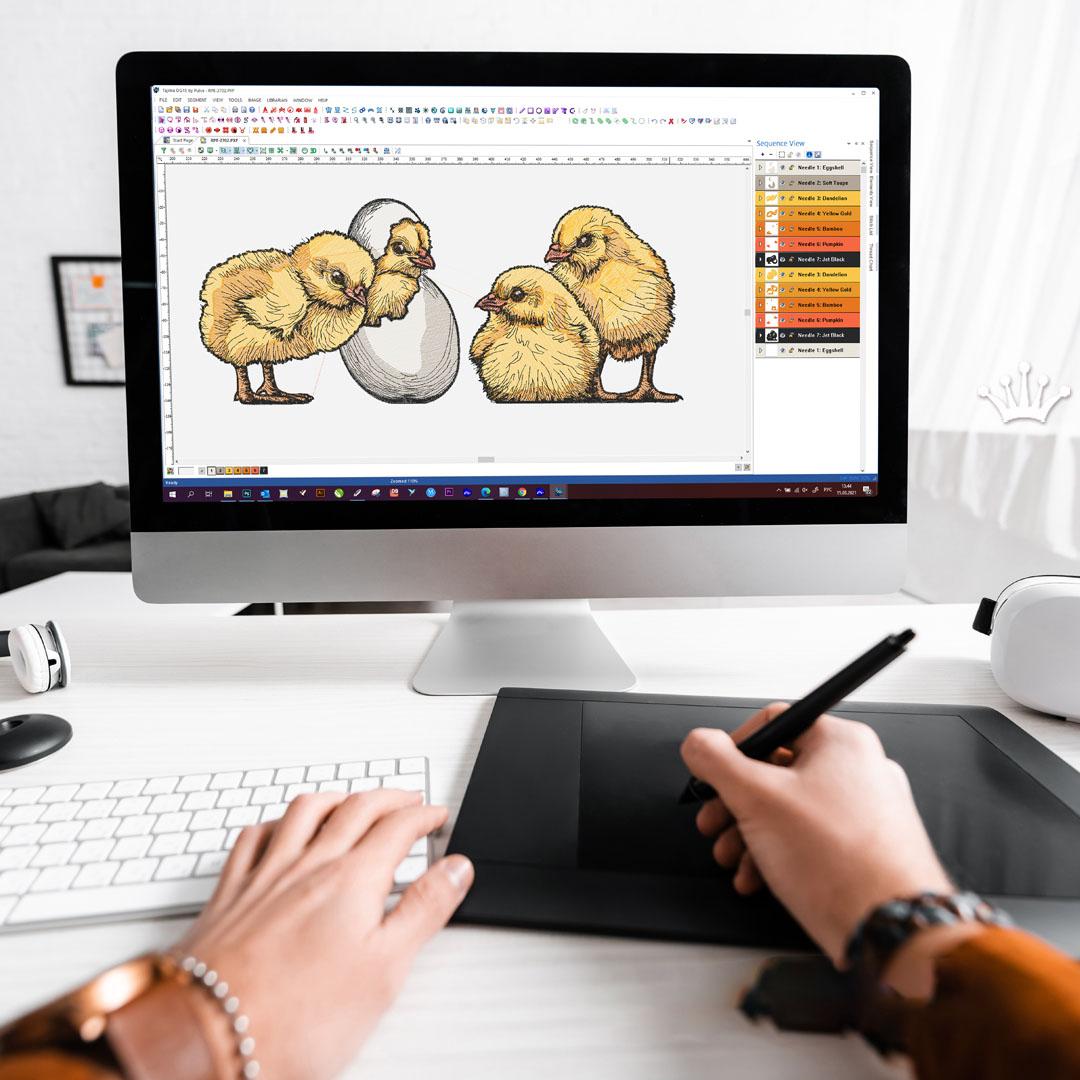Introduction
Picture this: You found an adorable puppy photo that would make perfect embroidery for a baby blanket. But your Janome machine only reads JEF files, and you're staring at a JPEG. Don't worry – learning how to convert image to JEF file is easier than you think, even if you've never digitized it before.
That moment when inspiration strikes but technical limitations get in the way? We've all been there. The good news is that converting image to JEF file doesn't require expensive software or professional skills. With the right approach, you can transform that precious photo, meaningful logo, or special drawing into stitch-ready magic for your Janome machine.
When you convert image to JEF file properly, you unlock:
✔ Crisp details that actually stitch out as intended
✔ Smooth satin stitches without awkward jumps or gaps
✔ Perfect color matching to Janome's thread system
✔ Trouble-free stitching that won't frustrate you mid-project
This isn't about complicated digitizing theory – it's practical, step-by-step guidance to get you from "I wish I could stitch this" to "Look what I made!" faster than you'd imagine. Whether you want to preserve a child's artwork in stitches or create personalized gifts, mastering how to convert image to JEF file opens up a world of creative possibilities.
The best part? You probably already have most of the tools you need to get started today. Let's turn that digital memory into tangible embroidery magic!
What You'll Need
Basic Requirements:
-
Any Janome embroidery machine
-
Computer (Windows/Mac) or smartphone
-
Original image (photo, logo, or drawing)
Recommended Software Options:
| Tool | Price | Best For |
|---|---|---|
| Janome Digitizer MBX | $$$ | Janome owners (most advanced) |
| SewArt | $59 | Budget-friendly self-digitizing |
| Ink/Stitch | Free | Manual digitizing (requires Inkscape) |
| My Editor (Janome) | Free | Basic edits for Janome machines |
Step 1: Choosing Your Image
Not all pictures convert well to embroidery. The best candidates have:
✔ Clear contrast – Easy to distinguish elements
✔ Simple shapes – Avoid photos with too much detail
✔ Bold outlines – Defined edges work best
Best choices for beginners:
-
Black and white clipart
-
Simple logos
-
Children's drawings
-
Silhouettes
Avoid for now:
-
Family photos
-
Watercolor paintings
-
Complex landscapes
Step 2: Preparing Your Image
Basic Cleanup (Using Free Tools):
-
Crop – Focus on the main subject (use Canva or Photos app)
-
Adjust contrast – Make darks darker and lights lighter
-
Remove background – Try Remove.bg (free online tool)
Advanced Prep (For Better Results):
-
Convert to black and white
-
Thicken thin lines (minimum 3 pixels wide)
-
Simplify to 2-3 colors maximum
Pro Tip: Save multiple versions as you edit – you might need to go back!
Step 3: Conversion Methods
Method 1: Auto-Digitizing (Easiest)
Using SewArt or Janome Digitizer:
-
Open your cleaned image
-
Select "Auto-Digitize" function
-
Adjust basic settings:
-
Stitch type (fill or satin)
-
Density (start with 0.4mm)
-
Underlay (add zigzag for stability)
-
-
Export as JEF
Method 2: Manual Tracing (Best Quality)
Using Ink/Stitch (Free):
-
Install Inkscape, then add Ink/Stitch extension
-
Import your image
-
Use Bezier tool to trace outlines
-
Assign stitch types to each section
-
Export as JEF
Step 4: JEF-Specific Settings
Janome machines need these special considerations:
✔ Thread colors: Program Janome-specific color codes
✔ Stitch order: Light to dark colors work best
✔ Hoop size: Match your actual Janome hoop
✔ Stitch length: 2.0-3.0mm for most designs
Step 5: Testing Your Design
Before stitching your final project:
-
Virtual Preview
-
Most software shows a simulation
-
Check for gaps or uneven areas
-
-
Scrap Fabric Test
-
Use similar fabric to your final project
-
Stitch a 3"x3" sample
-
-
Inspect Carefully
-
Look for:
-
Puckering
-
Thread breaks
-
Misaligned elements
-
-
Troubleshooting Common Issues
| Problem | Likely Cause | Fix |
|---|---|---|
| Design looks distorted | Wrong hoop size selected | Re-export with correct Janome hoop dimensions |
| Thread keeps breaking | Stitch density too high | Reduce by 10-15% |
| Colors look wrong | Incorrect thread chart | Use Janome's color numbering system |
| Machine won't read file | Corrupted JEF | Re-save using Janome software |
Free Alternatives
If you're not ready to buy software:
-
Online Converters
-
EmbroideryLibrary.com
-
MyEditor Online
-
-
Janome Mobile Apps
-
Janome Artistic Digitizer (basic)
-
Janome Memory Craft (design transfer)
-
Warning: Free tools often need manual cleanup after conversion.
Pro Tips for Better Results
-
Start Small – 4" designs are easiest to learn with
-
Stitch Order Matters – Do outlines last
-
Hoop Tight – Loose fabric causes misalignment
-
Use Stabilizer – Even on "easy" fabrics
What You Can Create
Now that you can convert images to JEF files, try:
-
Personalized gifts – Convert handwritten notes
-
Pet portraits – Simplify photos to 3-color designs
-
Home decor – Create custom embroidered art
-
Branded items – Stitch your logo on bags
Conclusion
Converting images to JEF files opens up endless creative possibilities for your Janome machine. Remember:
✔ Start with simple, high-contrast images
✔ Clean up your picture before converting
✔ Always test on scrap fabric first
✔ Small adjustments make big differences
Your first attempts might need tweaking – that's normal! With practice, you'll be converting images like a pro.
Final Tip: Save both your original image and JEF file – you'll want to make improvements as your skills grow!

